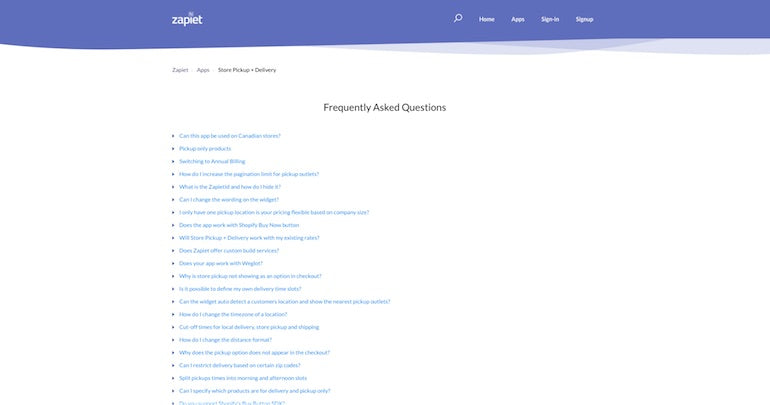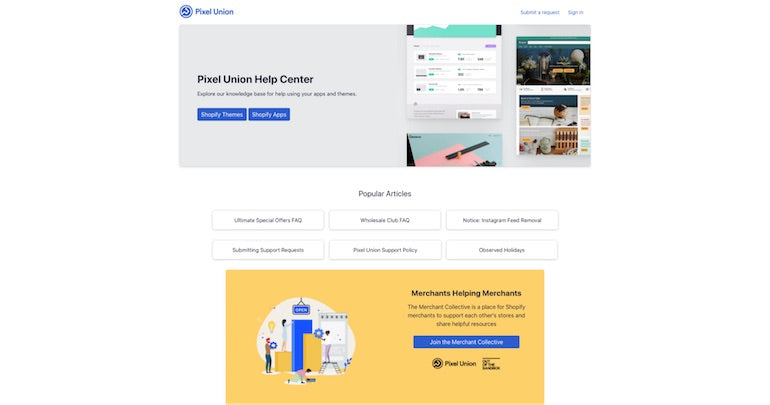Offering strong app support to your users is one of the best ways of increasing installs and growing your app’s reputation. However, as your app grows in popularity, so does your queue of support requests. Especially for two to three person teams, juggling customer support along with product development and growth can be challenging—and this challenge only grows leading up to major shopping events, like BFCM.
To find out how some of the most successful Shopify Apps evolved their support processes as their app businesses grew, we gathered a panel of experts to share their tips and tricks.
Members of this panel include:
![app support rhian]() Rhian Beutler
Rhian Beutler
Rhian is the COO ofVenntov, the creator ofSEO Manager,andOrder Lookup. She's passionate about small business success, and has used her background in SMB banking and retail operations to help merchants grow their business.
![app support ben]() Ben Moore
Ben Moore
Ben Moore is the CEO of Pixel Union. Since building their first Shopify Theme in 2011,Pixel Unionhas launched some of the platform's top selling themes, as well as the appsPixelpopandCountdown Sales Timer.
![app support aaron]() Aaron Wadler
Aaron Wadler
Aaron Wadler is the co-founder and CEO ofShopPad, which offers custom enterprise services and Shopify App Store applications. Founded in 2012, ShopPad is a certified Shopify Plus Partner and their apps are used by over 60,000 brands and retailers worldwide.
![app support andy]() Andy Cargill
Andy Cargill
Andy Cargill is the founder ofZapiet. HisStore Pickup + Delivery appserves Shopify merchants worldwide.
This panel was originally set to hit the main stage at Shopify Unite 2017, but an unplanned power outage forced the group to gather post-Unite over a teleconference instead (a situation that resonates in 2020, too). Their discussion can be watched below.
Below, we share the main takeaways from their chat on how you can optimize your approach to app support.
Build apps for Shopify merchants
Whether you want to build apps for the Shopify App Store, offer custom app development services, or are looking for ways to grow your user base, the Shopify Partner Program will set you up for success. Join for free and access educational resources, developer preview environments, and recurring revenue share opportunities.
Sign up1. Use automation to help surface and manage customer support needs
Don’t have the budget or bandwidth to manage additional support staff? Enabling automated processes can save time, keep you organized, and help you to proactively stay on top of merchant actions that require support.
Rhian from Venntov, for example, uses a bot to curate all app reviews (positive or negative) in aSlackchannel. This approach can be great for small teams, like Venntov’s, who can review the comments in Slack and discuss who on the team would be the best person to respond.
"Enabling automated processes can save time, keep you organized, and help you to proactively stay on top of merchant actions that require support."
Aaron from ShopPad also uses automation, connecting toHelpScoutto guide merchants through lifecycle events via triggered emails, ensuring no one gets forgotten. When they notice that a merchant has completed one step, but failed to move on to step two or three, an automated email is sent out. If there’s no response to the email, the merchant is bumped back up to the top of the queue and prompted with questions such as, “Did you get our email?” or, “Do you have any other questions?” ShopPad has found that this approach helps with app retention as well.
How to automate parts of your support process
- Set up workflows within your customer service software
- Automate emails using triggers programmed with a service likeZapier
- ExploreSlack botsthat can improve your team’s communication and delegation of support tasks
You might also like:How to Build an Effective and Friendly App Support Process.
2. Proactively prepare for support issues
Especially around major retail events, such as BFCM, your app support queue can easily become flooded. To prepare for these influxes, you can take measures to address issues ahead of time, and create canned responses for common issues.
Andy at Zapiet stresses the importance of having quiet time to write out clear and thoughtful email responses. When you’re under fire, it’s easy to rush your response and not communicate with the right tone and clarity. By writing thoughtful and thorough stock emails ahead of when you need them, you’ll save time and ensure effective messaging.
When the support queue is small, this can also be a good time to proactively reach out to customers. At Venntov, they make sure to occasionally check in with merchants, even if they don’t have any issues. This also helps Rhian and her team get a pulse on how merchants are enjoying the app.
How to proactively prepare for busy support seasons
- Set uptext expanderswith common support responses
- Pre-write email responses for common app issues
- Send check in emails to merchants during quiet times
3. Encourage self-support
Not only is self-support optimal for busy support teams, it’s often also a common avenue for merchants looking to solve issues.Customer service studies show that for 70 percent of consumers, a self-service option for handling questions or complaints is an expectation.
At Zapiet, every support request that comes in is catalogued in a Google Doc and organized by category. This helps the team identify which aspects of the app result in the most support requests. It also acts as a good guide to determine topics and categories for self-service document creation.


How to encourage self-support
- Create documentation that merchants can use to help navigate and solve their own app issues
- Update copy and prompts within the app to help guide merchants through functions and steps that frequently result in support needs
4. Have your support team adopt a product ownership model
For companies like Pixel Union, which serves merchants with multiple products, adoptinga model of product ownershipamong their support team has been a key to their success. Each member of their support team has a product that they’re principally responsible for.
This role involves being a product expert and attending all meetings related to their assigned product. In addition to encouraging deep knowledge among the support team, it also creates a sense of ownership in the product and its success.
How to implement product ownership among app support staff
- 随着你的团队和软件产品的增长,分配名单t support owners
- Include support staff in all meetings related to the app’s development and updates
- As your support team expands, have them train others on that app’s features
You might also like:How to Get Reviews for Your Shopify Apps.
5. Always lead with empathy
Inevitably, you’ll experience support requests that are stated less than cordially. While hearing about a merchant’s dislike of an app you’ve built can be disheartening, it’s important to always lead your responses with an empathetic tone.
Aaron of ShopPad stresses how he always coaches his support team to not take harsh complaints personally. It’s important to keep in mind that the merchant may be having a bad day, and that this may be a good opportunity to make their day better. Through this approach, some of the nastiest support emails they’ve received have ended up resulting in some of the app company’s most loyal users. Merchants end up feeling like the app developer cares about them, and can be trusted to have their best interests at heart.
同样重要的是把自己的作品ant’s shoes to understand why their emails or reviews may be a bit curt. Especially for first-time support requests, the merchant may be unaware of the human(s) behind the app, and feel like their request is going into a dark void. For this reason, Ben from Pixel Union recommends responding to all support requests as soon as possible, to help mitigate merchant anxiety over getting a response.
“虽然听abo血型ut a merchant’s dislike of an app you’ve built can be disheartening, it’s important to always lead your responses with an empathetic tone."
Another strategy that Pixel Union employs is having an assigned “manager” for “please transfer me to the manager” situations. For merchants, the feeling of being transferred to someone more senior can help them feel like they’re getting special treatment.
How to add more empathy to support responses
- Make response times as fast as possible to reduce merchant anxiety
- When unpleasantly stated requests come in, assume the merchant is having a bad day and that you can help make their day better through support
- Have a “manager” that you can transfer escalated issues to, as it helps merchants feel valued
Entrepreneurs helping other entrepreneurs
Merchants and app developers have the common goal of trying to grow a business through Shopify. Through A+ app support and excellent documentation, each interaction is an opportunity to grow together.
Have you found any automations that have helped improve your app support process?Let us know in the comments below!

 Rhian Beutler
Rhian Beutler Ben Moore
Ben Moore Aaron Wadler
Aaron Wadler Andy Cargill
Andy Cargill